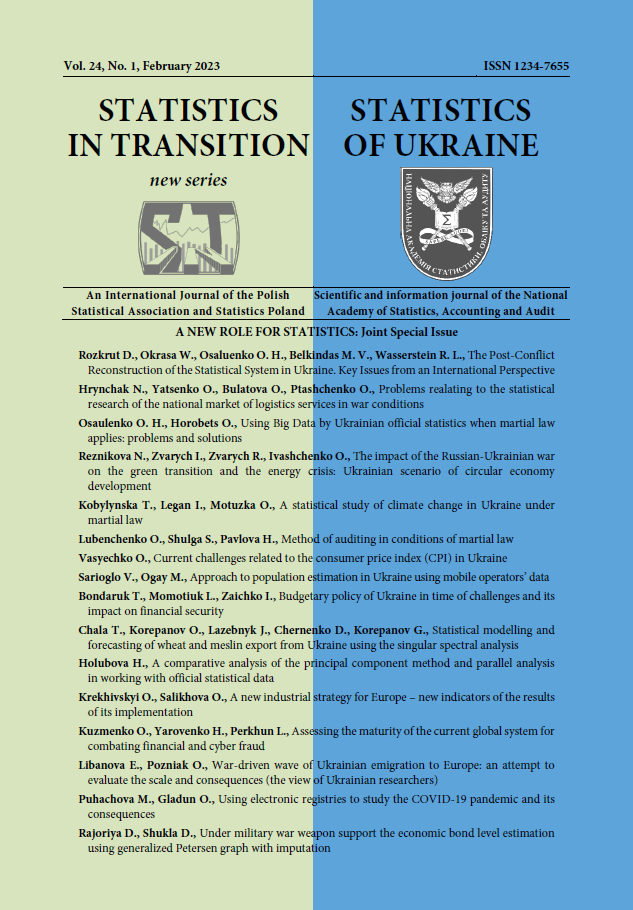ARTICLE
ABSTRACT
This paper discusses the experiences resulting from EU’s adoption and implementation of a wide variety of policy measures in response to the COVID-19 crisis. These measures included stimulating the relocation and expansion of manufacturing to reduce vulnerability, depending on imports, ensuring the stability and development of industrial production. Using the example of the pharmaceutical industry in EU27 in the years 1995–2018, the study proposes and tests a new approach to assessing the consequences of relocation policies aimed at developing the local production potential, increasing the value added by activity, and expanding the share of local value added in industry exports. Specifically, the focus is on the formation of statistical analysis tools for assessing the changes of the specialisation and identifying the country's comparative advantages. The authors propose new indicators: RSP – coefficient of Revealed Specialisation of Production, CAVA – coefficient of Comparative Advantage in Value Added by Activity and EVA – coefficient of Comparative Advantages in the Domestic Value Added Exports. Additionally, formulas for their calculation are provided which allow the assessment of the position of Ukraine’s industries among a reference group, widening the ‘revealed comparative advantage’ concept. Finally, a test of the new methodology showed that it can be used to identify the comparative advantages of EU member states supported by state assistance programmes involving the implementation of business projects which aim to develop domestic production.
KEYWORDS
indicators, specialization, comparative advantage, industrial production, value added activity, export.
REFERENCES
Balassa, B., (1961). The Theory of Economic Integration. London, George Allen & Unwin Ltd.
Balassa, B., (1989). ‘Revealed’ comparative advantage revisited. In B. Balassa (Ed.). Comparative advantage, trade policy and economic development. New York: New York University Press.
Barlow, P., van Schalkwyk, M. C., McKee, M., Labonté, R., and Stuckler, D., (2021). COVID-19 and the collapse of global trade: Building an effective public health response. The Lancet Planetary Health, 5, e102–e107. DOI: https://doi.org/10.1016/S2542-5196(20)30291-6.
Dunning, J. H., (1992). The Competitive Advantage of Countries and the Activities of Transnational Corporations, Transnational Corporations, No. 2, pp. 11–16.
Dunning, J. H., (1993) Multinational Enterprises and the Global Economy. Addison Wesley, New York.
European Commission, (2020a). Dependency of the EU pharmaceutical industry on active pharmaceutical ingredients and chemical raw materials imported from third countries. Retrieved from: https://ec.europa.eu/health/sites/health/files/files/committee/ev_20200312_795_e n.pdf
European Commission, (2020b). Affordable, accessible and safe medicines for all: the Commission presents a Pharmaceutical Strategy for Europe. Retrieved from https://ec.europa.eu/commission/presscorner/detail/en/ip_20_2173.
European Commission, (2020c). State aid SA.57100 (2020/N) – Germany – COVID-19 – Federal Framework Scheme “Aid for Covid-19 related R&D, investments in testing infrastructures and production facilities” (“Bundesregelung Forschungs- Entwicklungs- und Investitionsbeihilfen”), Retrieved from: https://ec.europa.eu/competition/state_aid/cases1/202018/285722_2152196_87_2. pdf
European Commission, (2020d). State Aid SA.57367 (2020/N) – France COVID-19: Aid for COVID-19 relevant R&D projects, investment into relevant testing and upscaling infrastructures, and investment into COVID-19 relevant production capacities, Retrieved from: https://ec.europa.eu/competition/state_aid/cases1/202024/286299_2162472_123_ 4.pdf
European Commission, (2020e). State aid SA.57519 (2020/N) – Poland COVID-19: R&D aid for Covid-19 relevant research and development, investment aid for the construction and upgrade of relevant testing and upscaling infrastructures, and investment aid for investments into production facilities for the production of Covid-19 relevant products, Retrieved from: https://ec.europa.eu/competition/state_aid/cases1/202027/286598_2168965_58_2. pdf
European Commission, (2021). Updating the 2020 Industrial Strategy: towards a stronger Single Market for Europe's recovery. Retrieved from: https://ec.europa.eu/commission/presscorner/detail/en/IP_21_1884
European Parliament, (2020). European Parliament resolution of 17 September 2020 on the shortage of medicines – how to address an emerging problem (2020/2071(INI)). Retrieved from: https://www.europarl.europa.eu/doceo/document/TA-9-2020-0228_EN.html
Eurostat, (2021a). COVID-19: support for statisticians. Retrieved from: https://ec.europa.eu/eurostat/data/metadata/covid-19-support-for-statisticians
Eurostat, (2021b). European statistical recovery dashboard. Retrieved from: https://ec.europa.eu/eurostat/cache/recovery-dashboard/
Falkowski, K., (2018a). Competitiveness of the Baltic States in international hightechnology goods trade, Comparative Economic Research. Central and Eastern Europe, ISSN 2082–6737, De Gruyter, Warsaw, Vol. 21, Iss. 1, pp. 25–43, https://doi.org/10.2478/cer-2018-0002
Falkowski, K., (2018b). Trade interdependence between Russia vs. the European Union and China within the context of the competitiveness of the Russian economy, Equilibrium. Quarterly Journal of Economics and Economic Policy, Institute of Economic Research, vol. 13(4), pp. 667–687. https://doi.org/10.24136/eq.2018.032
Grumiller, J., Grohs H., Reiner, ?., (2021). Increasing the resilience and security of supply of production post-COVID-19 – The Case of Medical and Pharmaceutical Products. Working Paper Reihe der AK Wien – Materialien zu Wirtschaft und Gesellschaft 216, Kammer für Arbeiter und Angestellte für Wien, Abteilung Wirtschaftswissenschaft und Statistik.
Johnson Robert, C., (2014) Five Facts about Value-Added Exports and Implications for Macroeconomics and Trade Research. Journal of Economic Perspectives, 28, 2, pp. 119–142. Retrieved from: http://gesd.free.fr/johnson514.pdf
Kumar A, Luthra S, Mangla S. K., Kazançoglu Y., (2020). COVID-19 impact on sustainable production and operations management. Sustain Oper Comput, 1, pp. 1–7. https://doi.org/10.1016/j.susoc.2020.06.001.
Motoryn, R., Prykhodko, ?., Ślusarczyk, B., (2020). Asymmetry of foreign trade turnover between Ukraine and Poland. Statistics In Transition new series, June 2020, Vol. 21, No. 2, pp. 143–156, DOI: 10.21307/stattrans-2020-017.
OECD, (2021). Trade in Value Added. Retrieved from: https://www.oecd.org/sti/ind/measuring-trade-in-value-added.htm#access
OECD, (2021). Trade in Value Added. Retrieved from: https://www.oecd.org/sti/ind/measuring-trade-in-value-added.htm#access
Salikhova, O. B. (2012). New approaches to determining international comparative advantages. Econom? and Forecasting, 1, pp. 101–120. Retrieved from: http://eip.org.ua/docs/EP_12_1_101.pdf
Tirivangani T, Alpo B, Kibuule D, Gaeseb J, Adenuga B. A., (2021). Impact of COVID-19 pandemic on pharmaceutical systems and supply chain–a phenomenological study. Explorat Res Clin Social Pharm., 2, 100037. https://doi.org/10.1016/j.rcsop.2021.100037
Vo, T. D.; Tran, M. D. (2021). The impact of covid-19 pandemic on the global trade. Int. J. Soc. Sci. Econ. Invent., 7, pp. 1–7. https://doi.org/10.23958/ijssei/vol07- i01/261
Wang, Y., Jiang, S., (1999). China: A future star for foreign pharma companies. Pharmaceutical Executive, 19(8), pp. 78–87.
